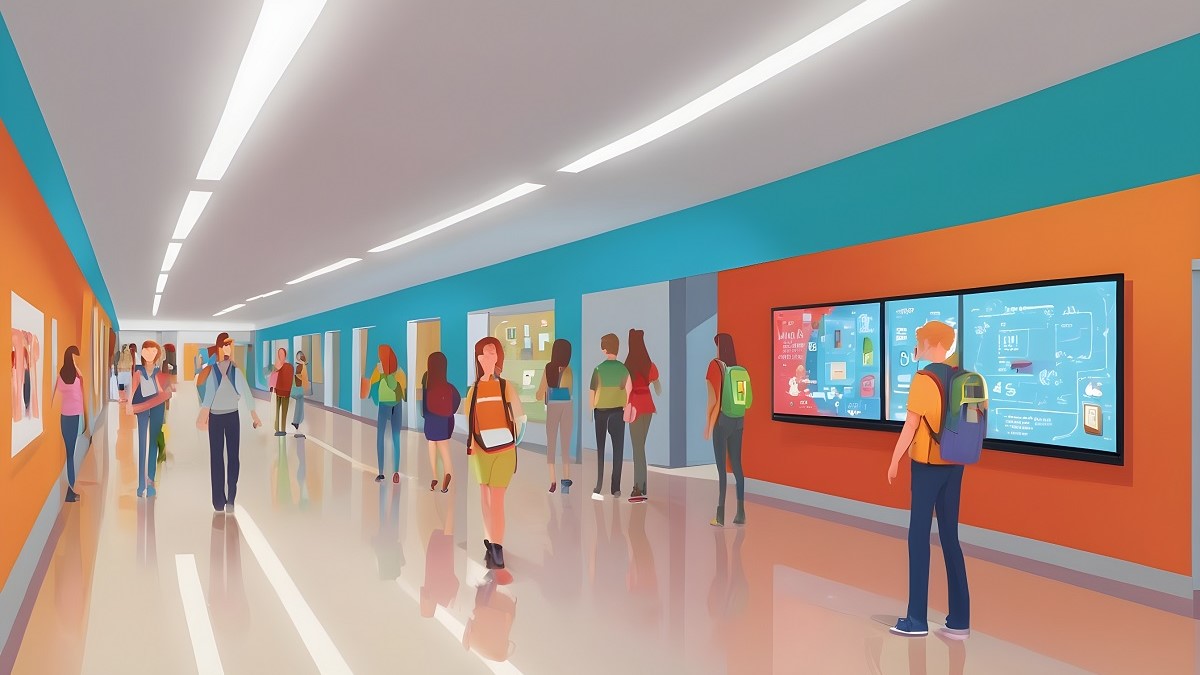
The integration of technology has emerged as a pivotal trend in education, reshaping the way educational institutions operate and deliver learning experiences. For district leadership and decision-makers, understanding the nuances and implications of technology integration is paramount in fostering efficient and effective educational administration.
The Landscape of Educational Administration
Educational administration, traditionally characterized by labor-intensive tasks such as extensive paperwork and manual data management, has undergone a notable transformation with the integration of technology. This shift has resulted in streamlined processes, relieving the administrative workload and empowering leaders to concentrate on strategic planning and initiatives aimed at enhancing the overall educational experience. Incorporating digital tools has played an important role in automating routine tasks, so that the work is more efficient.
The Evolution of Technology Integration
Over the past decade, technology integration in educational administration has evolved from a mere convenience to a necessity. For instance, consider the implementation of a cloud-based student information system. District leadership and decision-makers recognize that the power of technology is not just about keeping up with the times - it's about optimizing administrative workflows and creating an environment that supports effective teaching and learning. The adoption of a cloud-based system streamlines processes like student enrollment, attendance tracking, and resource allocation, freeing up valuable time for decision-makers to focus on strategic planning and educational initiatives. Technology has become an essential tool in modern educational administration, enhancing efficiency and fostering an environment that supports effective teaching and learning.
Streamlining Administrative Workflows
One of the key advantages of integrating technology is the simplification of administrative workflows. For example, the implementation of a robust Learning Management System (LMS) automates routine tasks, such as student enrollment and attendance tracking, creating a more efficient process. With an LMS in place, decision-makers can redirect their valuable time towards strategic planning and educational initiatives. Whether it's optimizing resource allocation or managing budgets, technology helps to reduce the administrative burden on district leadership, fostering a more agile and effective educational ecosystem.
Enhancing Communication and Collaboration
Effective communication and collaboration are integral to successful educational administration, with technology integration serving as a cornerstone for seamless interactions among stakeholders. Cloud-based platforms and communication apps facilitate real-time information sharing, creating a connected educational community. Tools like CleverLive cloud-based content management platform offer a user-friendly interface for digital signage projects. CleverLive CMS transforms interactive displays into dynamic communication tools, allowing effortless management and sharing of content. CleverLive stands out as a crucial communication asset for schools, empowering the efficient delivery of alerts, updates, and informational presentations. With its drag-and-drop interface and versatility, CleverLive CMS exemplifies the power of technology in enhancing communication and engagement within educational environments.
Boosting Campus Safety and Communication
An essential aspect of technology integration is its role in boosting campus safety and communication. Advanced Audio-Visual (AV) technology, when integrated with security measures, enhances overall safety on campus. Surveillance systems, emergency notification systems, and access control technologies contribute to a secure environment. Effective communication tools ensure rapid dissemination of critical information during emergencies, promoting feelings of safety within the educational community. For example, the Attention! solution integrates FrontRow Conductor™, Boxlight's CleverLive CMS, and interactive flat panels displays or digital signage, enabling efficient campus-wide information sharing and streamlined communication. Attention! enhances campus safety systems by triggering audio alerts during emergencies and provides customizable information sharing, ensuring a more connected learning environment.
Data-Driven Decision Making
Informed decision-making is vital in educational administration. With the integration of technology, district leadership acquires access to powerful data analytics tools. These tools delve into diverse facets of educational operations, such as student performance metrics and resource utilization trends. By leveraging this data, administrators can make evidence-based choices, improving outcomes for both administrators and students. For instance, identifying a pattern of low performance may trigger targeted interventions, enhancing overall success rates.
Facilitating Remote Administration
Recent global events have highlighted the vital need for flexibility in educational administration. Technology integration enables remote administration, allowing decision-makers to handle essential tasks from any location. For example, cloud-based systems and virtual collaboration tools create the necessary infrastructure for effective remote administration. This ensures the continuity of educational leadership, even in challenging circumstances, such as unexpected disruptions or emergencies, allowing administrators to seamlessly manage operations and maintain educational continuity.
Strategies for Successful Technology Integration
For district leadership and decision-makers, successful technology integration requires a strategic approach. Investing in professional development programs for staff ensures that educators and administrators are well-versed in technology tools. Collaborating with technology experts and vendors helps in selecting and implementing solutions that align with the specific needs and goals of the educational institution. Encouraging a culture of innovation and adaptability among staff promotes the effective use of technology for administrative purposes.
Looking Ahead: Future Trends in Educational Technology Integration
As technology continues to advance, the future of educational administration holds exciting possibilities. Artificial intelligence (AI) and machine learning are poised to revolutionize administrative tasks, automating complex processes and providing predictive analytics for more informed decision-making. Augmented reality (AR) and virtual reality (VR) technologies offer immersive training experiences for educators and administrators, enhancing professional development opportunities.
Embracing the Future of Education
The incorporation of technology is shaping the future of education. District leadership and decision-makers hold a key role in navigating this digital learning landscape, ensuring that technology is fully utilized for the benefit of students and the educational community. As we look ahead, the strategic integration of technology remains essential, creating educational environments that are not only efficient and effective but also adaptive to the evolving needs of the 21st-century learner.
Learn how Boxlight solutions can support your district and school technology initiatives. www.boxlight.com


